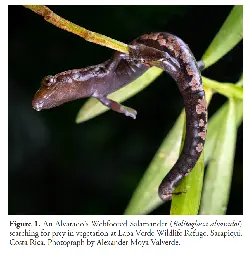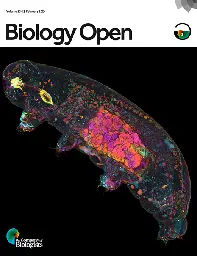Reptiles and Amphibians
- (Scottsdale, AZ) Gila Monster or Chuckwalla?

Currently in an argument- "too thin to be a Gila" vs "too beaded to be a chuckwalla"
Very sluggish, but it's only like 19c today. Maybe 25-30cm long
- The common milk frog (Trachycephalus typhonius)

This is a Trachycephalus typhonius, formerly Trachycephalus venulosus, from Yucatan.
These frogs secrete a sticky and irritant milk-like fliud through its skin when bothered. Several years ago I got some some of that fluid into my eyes by accident - that hurts similar to scratching one's eye after touching a spicy pepper. So, they are not terribly toxic but I certainly do not recommend the experience.
Funnily enough I just ran a search and found a publication of someone who describes a similar but worse experience: https://www.thebhs.org/publications/the-herpetological-bulletin/issue-number-152-summer-2020-1/3101-09-a-caution-on-handling-i-trachycephalus-venulosus-i-anura-hylidae-toxic-effects-of-skin-secretion-on-human-eyes/file
You may notice that the finger pads of this frog look green. That's because its bones are green! A characteristic feature of this species. Here is a photo (not mine) of a skeleton of one of these : https://www.pybio.org/wp-content/uploads/2008/06/t-ven31.jpg
- Imantodes cenchoa

Found this Imantodes cenchoa sleeping on top of a leaf in Punta Laguna, Quintana Roo.
Here is a photo of where it was sleeping:
There are a few different snakes of the genus Imantodes in Yucatán. What sets this species apart is that the row of scales on its back consists of enlarged scales. Here is a closeup emphasizing that row of scales. The green arrow points at an enlarged mid-dorsal scale, the blue arrow at a regular scale.
In comparison, here is a photo from an Imantodes tenuissimus that I took back in 2009 in Mérida, Yucatán (with a less sharp camera), and a closeup of its mid-dorsal scales that does not show this enlargement.
- Yucatan casquehead tree frog

One of my favorite frogs! Spent some time specifically looking for it. Managed to find two near Cobá, in Quintana Roo (in the Yucatán peninsula). This frog hides in holes in lime stone and tree trunks, and makes use of its flat head to block the entrance. This type of defense is known as phragmosis.
Some other shots:
- Anole sleeping

Found this anole in Yucatan. I am not sure of its exact species - probably an Anolis sp..
Anoles often sleep at the tips of leaves and twigs. My guess is that this is a strategy to prevent nocturnal predators sneaking up on them through the branches without making its bed vibrate. When woken up they can quickly drop down.
- Can an impacted reptile excrete ammonia?
Im noticing white chalky excretions in my tank but I'm not seeing any turds. Can the lizard still be blocked up or are they fine?
- Rankin Dragon Breeders in the US
Hi -
Wondering if someone know a reputable rankin dragon breeder.
I’m first time reptile enthusiast and looking to find good trustworthy breeders in the US.
Thanks
- Possibly Eleutherodactylus planirostris

Found many of these frogs under a wet trash bag in a back yard in Mérida, Yucatán. I made use of a handheld flash with a remote trigger for lighting, and a Sigma 105 mm as my macro lens.
These frogs do not seem to match with any of the local frogs reported in Julian C. Lee's field guide to the amphibians and reptiles of the maya world.
From a reverse image search, I mostly found images of the green house frog Eleutherodactylus planirostris. Eleutherodactylus planirostris is native to Cuba and the Bahamas, and is often introduced with plants that come from green houses in those areas. These frogs go from tadpole to frog while still inside of the egg, which explains why the baby frogs are so small.
The visual aspect, the incredibly small baby frogs, and the fact that they were found in a back yard in the city with greenhouse plants, all lead me to conclude that it is likely Eleutherodactylus planirostris.
- (Video) Target Training! 🥰i.imgur.com Imgur
Discover the magic of the internet at Imgur, a community powered entertainment destination. Lift your spirits with funny jokes, trending memes, entertaining gifs, inspiring stories, viral videos, and so much more from users.
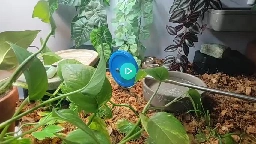
cross-posted from: https://programming.dev/post/18310392
> Royals aren't exactly the most trainable snakes and Revy still isn't super comfy with moving very far, but she's great at orienting towards the target and did really well today 🥰 I'm very proud of her! > > If you wanna know more about Target Training, check out Lori Torrini on Youtube! She's pioneering the whole concept, and really really knowledgeable about snake behavior and cooperative care 💕
- Frog Saunas Could Help Battle Deadly Diseasewww.nhm.ac.uk Frog ‘saunas’ could help species to battle deadly disease
Artificial hotspots might be able to help frogs fight off chytridiomycosis.
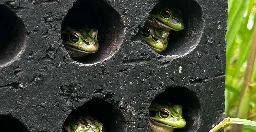
- Unknown frog in the desert (Payne's Find, Western Australia)

Several 2cm long frogs were found in this tiny little granite pool in the desert. Any IDs would be welcome, I suspect it could be a Litoria of some sort.
- Meet The Incredible Mushroom-Frog!

cross-posted from: https://lemmy.ml/post/13688681
> On the 9 June 2023, at Mala, Karkala, Karnataka, India, researchers found Rao’s intermediate golden-backed frog, (Hylarana intermedia) with a rather fetching, fungal companion growing out of it's side > > Mycologists identified the fungi as Common Bonnet, part of the Mycena genus, a type of fungi that mostly grows on rotting wood from dead trees, however it has also been discovered to be able to thrive on living plants as well > > > ! > > The frog appeared to be quite healthy and was not caught, so there's no definitive answer why it was hosting a mushroom, however... > > >...one of the possibilities is that there is a small piece of woody debris under the skin of the frog after it got lodged in the skin and it has sprouted a mushroom from it.... > > All info from here and here > > All photos by Lohit Y.T. one of the researchers who discovered the frog and co-author of the paper >
- Arboreal or terrestrial: Oviposition site of Zhangixalus frogs affects the thermal function of foam nests

Link to the article: https://onlinelibrary.wiley.com/doi/10.1002/ece3.10926
Abstract
>Temperature is essential for the survival and development of eggs. Some anurans have evolved and developed foam nesting traits, with thermal insulation considered to be among their functions. Foam-nesting frogs tend to exhibit reproductive plasticity. For example, they oviposit on both trees and the ground. How such plasticity affects foam nest function is of major relevance and is likely related to the adaptation of foam nesting frogs. However, this has not been well studied. In this study, we examined the interaction between foam nest site, foam nest function, and egg fate using the Japanese green tree frog, Zhangixalus arboreus, and analysed how nest site differences (arboreal or terrestrial) affect the thermal function of foam nests. We compared the thermal functions of foam nests between arboreal and terrestrial oviposition sites of Z. arboreus. We artificially replaced half of the arboreal nests with terrestrial environments and recorded temperature in and outside of the experimental terrestrial nest and original arboreal nests. We also examined egg survival and hatching rates for all the nests. The results indicated superior heat insulation in terrestrial nests, with warmer temperatures inside than outside the nests, especially at night, which led to a high egg survival rate. Therefore, terrestrial ovipositing should be valid under cold weather conditions. This may be related to the evolutionary history of oviposition site plasticity of this genus, which originally had an arboreal oviposition trait but evolved into terrestrial site use owing to global cooling. Our novel insights into the evolution and adaptivity of foam nesting and oviposition site use in Z. arboreus make an important contribution to animal ecology.
- Golden Flying Snake

I think that is what it is. Extraordinary climbers. I find them on the second floor of the house every few months. I see them outside a few times a week. Colouration is highly variable locally. Here they are green and black.
Wikipedia and a few other sources say this
> Also, it is reported to take snakes occasionally, and to avoid frogs, though frogs are also reported being eaten.
In Cambodia they always take frogs, and will strike poisonous toads, then spit them out.
- Juvenile Painted Bronzeback

Lovely things, quite relaxed as babies. This one was rescued from a palm tree after a storm. Another photo in body.
- [PDF] Mosquito Bite-induced Color Change in Chameleon Skin
I was browsing through some literature about color-changing in chameleons and stumbled upon this relatively recent paper about how chameleons will change color where mosquitoes bite them.
From the discussion:
>While determining the particular mechanism(s) of color change is outside the scope of the current study, we nonetheless serendipitously discovered multiple instances of mosquito bite-induced color change in wild chameleons. This demonstrates that citizen science can produce discoveries of previously unknown natural phenomena, as our study represents the first formal documentations of mosquitoes feeding on chameleons as well as chameleon color change induced by arthropod hematophagy. These findings provide additional insights into the parasite-host interactions, such as the mosquitoes feeding on sleeping chameleons and particularly at the mouth.
- Iguana enclosure mid-upgrade

Still a lot to do and fill out. All surfaces are sealed a long time ago and should be reptile safe. Cat palm is reptile safe from what I’ve seen.
4 nozzle MistKing sprayer setup for humidity, heat+uva/b provided by multiple bulbs. R.O. water provided in basin and spraying.
Always open to more advice for husbandry! His name is Julian and he gets a large variety of veggies minimizing oxalates
- African Red Toad [OC]mastodon.africa Dakspyker (@Dakspyker@mastodon.africa)
Attached: 1 image Found this oke chilling on my patio furniture this morning. He is an African Red Toad. #toad #africa
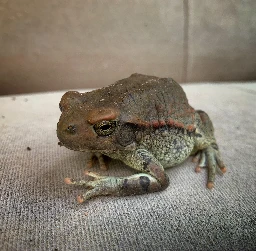
- A new species of salamander (Caudata: Plethodontidae: Bolitoglossa) from the subalpine rain páramo of the Cordillera de Talamanca, Costa Rica

Link to the PDF: https://amphibian-reptile-conservation.org/pdfs/Volume/Vol_17_nos_1-2/ARC_17_1-2_[General_Section]_143-160_e327.pdf
- What is this lizard? Is it safe to free them? Is it poisonous? (Spain)

Edit: We have already freed them. We were worried that they were poisonous and something could happen to our dog. Thank you very much to all.
